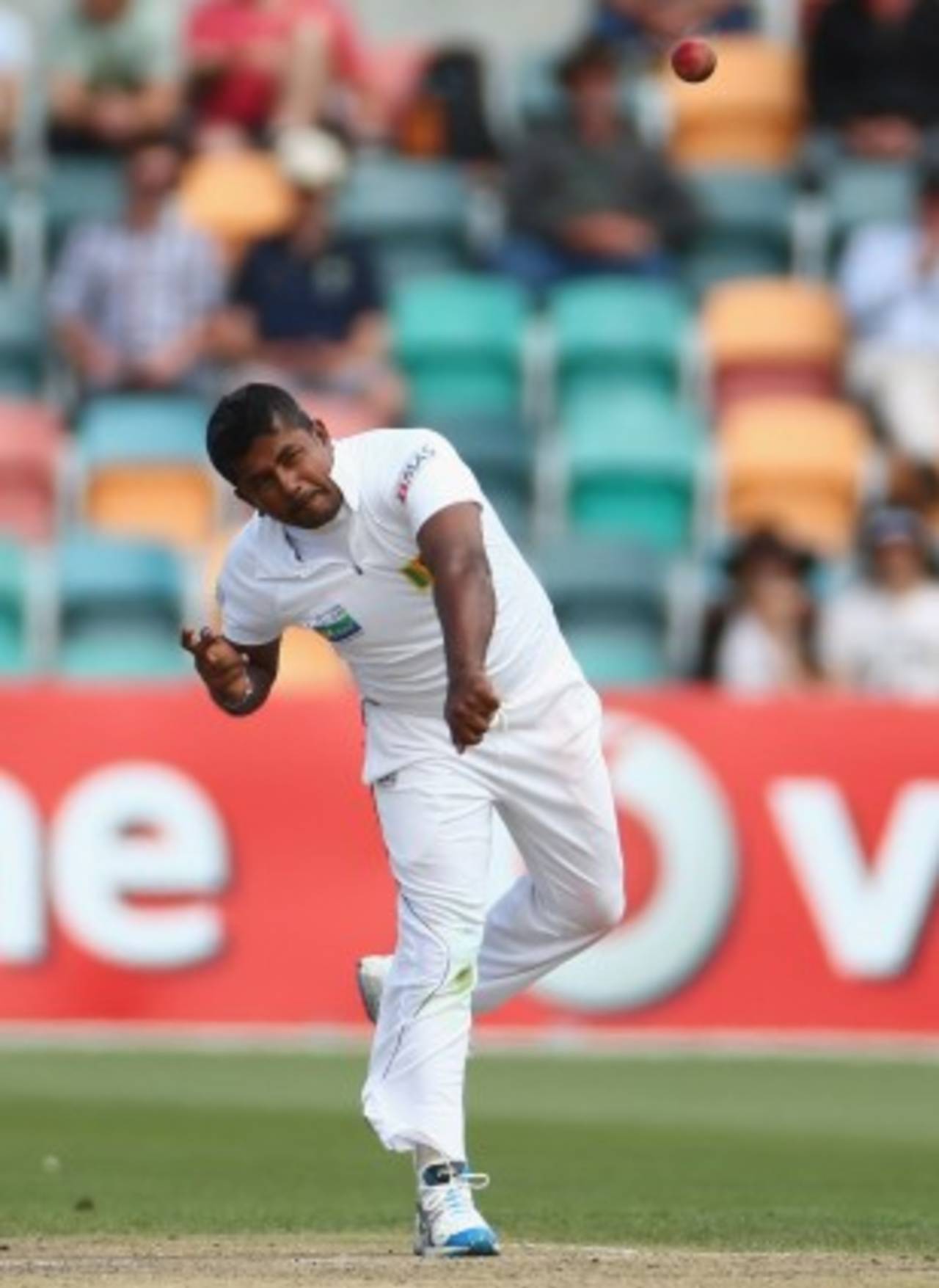Amid the management-speak excesses of Pat Howard's verdict on the South Africa series, Australia's team performance manager offered the following succinct line: "To be the best you've got to be well and truly the best, and we've got a long way to go." Limping like Michael Clarke was on day four, that journey seems even longer.
Whether or not Australia will get much closer to becoming "well and truly the best" during this series against Sri Lanka is questionable. Irrespective of the opposition, their progress in
Hobart so far has been at a cost that has reinforced the precarious state of the national team so close to a pair of major assignments against India and England.
To lose another fast bowler in
Ben Hilfenhaus was unfortunate if not entirely unexpected, given that the Tasmanian's side ailment makes him the seventh pace bowler somewhere near the national team to fall prey to injury. The sight of Clarke stepping gingerly between overs to assume a stationary position at first slip was altogether more concerning, for while Australia does have a rich supply of fast bowlers, the list of men behind the captain capable of leading the national team is even less numerous than the poorly attendances at Bellerive Oval this week.
Clarke's mere presence on the field, rather than seeking treatment in the rooms for a hamstring problem, spoke volumes about the lack of ready replacements for his tactical flair and ideas when Australia are attempting to bowl an opposing team out in the fourth innings. It did not reflect a great deal of confidence in Clarke's deputy Shane Watson, who has led his country in ODIs before and now looks a chance of assuming the Test captaincy should Clarke fail to recover in time for the Boxing Day Test.
Watson's value as a bowling option was to be confirmed when he struck the first blow of Sri Lanka's chase, coaxing an outside edge from Tillakaratne Dilshan with a ball that bounced and seamed away a fraction on an immaculate line. But like Dilshan, Watson's skills appear best suited to being used without the burden of captaincy, something that he wrestled with at times during his time deputising for Clarke in ODIs in Australia and the West Indies earlier this year.
Another issue of considerable worry for Australia on day four was the team's play against the spin of
Rangana Herath. As the world's
most prolific wicket-taker in 2012, Herath poses problems at least the equal to those that will be presented by India's bevy of slow bowlers in early 2013 and Graeme Swann and Monty Panesar later. But the failure of Watson, in particular, to deal with his flight, spin and variations in pace suggested that the scheduling crossover, which will have most of Australia's ODI exponents unavailable for the opening match of the Test tour to the subcontinent in February, will be ill-timed for some.
"It's inevitable, with our scheduling at the moment that type of stuff is inevitable," Australia's coach Mickey Arthur said. "For us to give best possible preparation to the Test squad we've got to get as many of them into India as soon as we can, so they can prepare properly for what's going to be a tough four Test matches. We'll split our staff, I'll definitely see the one-dayers out, I suspect if Michael Clarke's fit he'll do the same, because we've got that responsibility to the Australian public and to the sponsors, but we wouldn't be preparing ourselves properly for the four Tests if we didn't give ourselves maximum opportunity to go out to India earlier and prepare."
Watson batted at No. 6 for Australia on the tetchy
2008 tour of India, and played the odd decent innings against the old ball. In 2010, he played his longest and most patient Test knock against MS Dhoni's team at the outset of the
Mohali match that would end in such heart-rending fashion for a team then led by Ricky Ponting. However the surfeit of ODI and Twenty20 matches played by Watson since, and his continuing shuffle around the batting order, do not appear to have helped his progress against the spinning ball. He was bottled up by Herath and unable to work the ball around, a fretful five also featuring a pair of beseeching LBW appeals before ending with a stumping as ball spun past a groping bat.
Herath's wiles will be useful ahead of India, most notably on the SCG where this summer the pitch has shown a return to its slower, spinning ways of yore rather than the slightly faster and often seaming surface of recent seasons. "He's a quality performer and he's shown it this year, he's got a phenomenal record this year, so hopefully that goes some way [towards] giving us a little snippet of playing [Pragyan] Ojha or [Ravindra] Jadeja, whoever it is, in India," Arthur said. "And Herath is a really good bowler, so looking forward to that confrontation through the summer."
How Australia fares on the final day in Hobart will be intriguing in itself of course, as Mahela Jayawardene and Kumar Sangakkara dig in for battle amid the increasingly variable bounce offered by the surface. The hosts' chances of getting closer to the high mark set by Howard, Arthur and the limping Clarke will be best measured on their travels, and they stand little chance of enjoying success if they suffer the sorts of injuries and hiccups against spin witnessed here.
